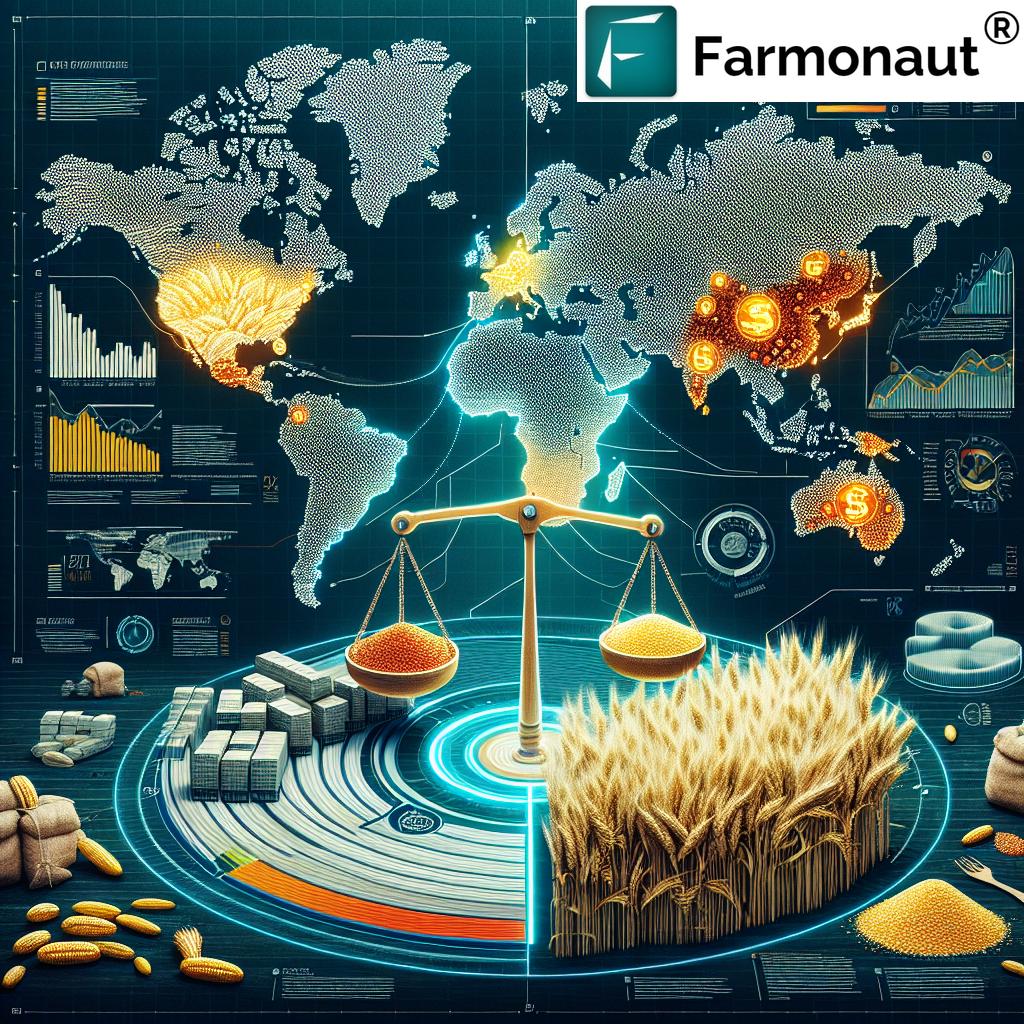Breaking: Russia Slaps $22.27 Wheat Export Duty, Shaking Global Grain Markets

In a move that has sent ripples through the global grain market, Russia has announced a significant wheat export duty of $22.27 per metric ton, set to take effect on October 23, 2024. This decision by the Russian Ministry of Agriculture marks a pivotal shift in Russian agricultural export policy, with far-reaching implications for international wheat trade and agricultural commodity prices.
Understanding the New Russia Wheat Export Duty 2024
The newly imposed wheat export regulations Russia has implemented are part of a broader strategy to manage domestic grain supplies and stabilize prices. Here are the key points to understand:
- The duty of $22.27 per metric ton applies specifically to wheat exports
- Additional grain tariffs have been set for barley and corn
- These measures are based on a floating duty system that adapts to market fluctuations
- The policy aims to balance domestic needs with export demands
For farmers and agricultural stakeholders looking to stay informed about these changes, the  offers real-time updates and insights into global agricultural trends.
offers real-time updates and insights into global agricultural trends.
The Russian Grain Market Impact
The implementation of these export fees is expected to have a significant Russian wheat tariff effect on both domestic and international markets:
- Domestic Price Stabilization: By potentially reducing exports, the policy aims to increase domestic supply and stabilize local prices.
- Export Volume Changes: The new duties may lead to a decrease in Russian grain exports, altering global supply dynamics.
- Market Competitiveness: Russian wheat may become less competitive in the global market due to the added cost of the export duty.
- Farmer Income Impact: Russian farmers might face reduced income if global demand for their wheat decreases.
To navigate these changes effectively, farmers can leverage tools like the  for Android users or the
for Android users or the  for iOS users to monitor market trends and optimize their farming strategies.
for iOS users to monitor market trends and optimize their farming strategies.
Global Wheat Prices Forecast: Ripple Effects Across Markets

The Russian agricultural export policy change is expected to have significant implications for the global wheat prices forecast:
- Price Increases: With reduced supply from a major exporter, global wheat prices may rise.
- Market Volatility: Uncertainty around the policy’s long-term effects could lead to increased market volatility.
- Shifting Trade Patterns: Importers may seek alternative sources, potentially benefiting other wheat-exporting nations.
- Food Security Concerns: Higher prices could impact food security in wheat-importing developing countries.
For real-time insights into these market changes, agricultural professionals can access valuable data through the Farmonaut Satellite API.
International Grain Trade Changes: A New Landscape
The Russian wheat export duty 2024 is set to reshape the landscape of international grain trade:
- Competitive Advantage Shifts: Other major wheat exporters like the U.S., Canada, and Australia may gain a competitive edge.
- Supply Chain Adjustments: Global wheat importers may need to diversify their sources and adjust logistics.
- Policy Responses: Other countries might reconsider their own export policies in response to the Russian move.
- Market Speculation: Increased uncertainty could lead to more speculative activity in wheat futures markets.
To stay ahead of these international grain trade changes, industry professionals can refer to the comprehensive Farmonaut API Developer Docs for integrating real-time agricultural data into their decision-making processes.
Broader Implications of Russian Agriculture Policy
The new export duties on wheat, along with similar measures for barley and corn, reflect a broader shift in Russian agriculture policy:
- Food Security Focus: Russia is prioritizing domestic food security over export revenues.
- Economic Strategy: The policy aims to add value to grain exports by encouraging domestic processing.
- Geopolitical Tool: Grain export regulations could be used as a lever in international relations.
- Agricultural Sector Development: The policy may drive investments in domestic agricultural infrastructure and technology.
Navigating the New Reality: Strategies for Stakeholders
As the global grain market adjusts to these new wheat export regulations Russia has implemented, various stakeholders will need to adapt:
- For Importers:
- Diversify wheat sources to reduce dependence on Russian exports
- Consider long-term contracts with alternative suppliers
- Explore domestic production expansion where feasible
- For Exporters:
- Capitalize on potential market gaps left by reduced Russian exports
- Invest in production efficiency to remain competitive
- Monitor policy changes in other exporting countries
- For Traders:
- Adjust risk management strategies to account for increased volatility
- Stay informed about policy changes and market reactions
- Explore opportunities in alternative grains and markets
- For Farmers:
- Consider crop diversification to mitigate market risks
- Invest in technologies for improved yield and cost efficiency
- Stay informed about global market trends and local policy changes
To effectively implement these strategies, stakeholders can leverage advanced agricultural technologies and data services provided by platforms like Farmonaut.
Conclusion: A Shifting Landscape in Global Grain Markets
The introduction of the $22.27 per metric ton Russia wheat export duty marks a significant moment in the global grain market. As we move towards 2024 and beyond, the repercussions of this policy change will continue to unfold, potentially reshaping international wheat trade patterns and influencing agricultural commodity prices worldwide.
While challenges lie ahead, opportunities also emerge for adaptable and informed market participants. Staying abreast of these developments and leveraging advanced agricultural technologies and data services will be crucial for navigating the evolving landscape of global grain markets.
As the situation develops, continued monitoring of Russian grain exports, global supply chains, and market responses will be essential. The agricultural sector’s resilience and adaptability will be key in addressing the challenges and seizing the opportunities presented by these significant policy shifts.
For those looking to stay ahead in this dynamic environment, tools like the Farmonaut app and API offer valuable insights and data-driven solutions to navigate the complexities of the global agricultural market.